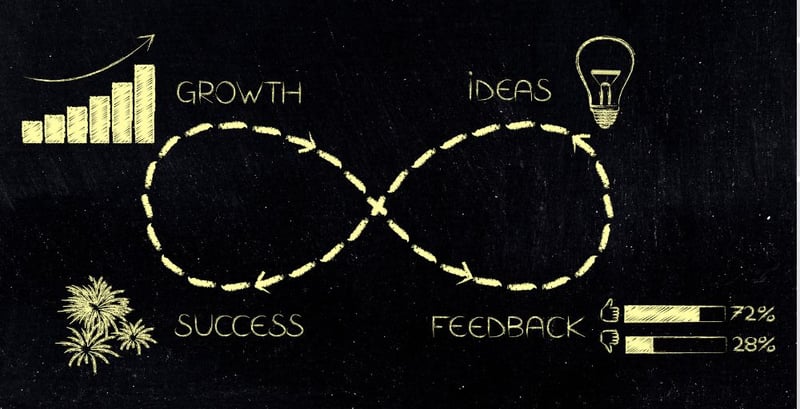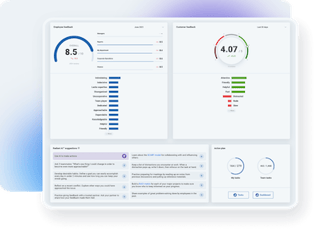
How Managers Use Employee Feedback to Drive Real-Time Performance Improvements
As a manager, one of your key responsibilities is to ensure the performance and productivity of your team. While there are various strategies and techniques to achieve this, one powerful tool that often goes overlooked is employee feedback. Feedback is a valuable resource that provides insights into employee performance, engagement, and satisfaction, and when used effectively, it can be a catalyst for immediate improvements in performance.
Video Highlights: Get the article's key tips in just 90 seconds.
In this article, we will explore the importance of employee feedback in the workplace, how managers can collect and utilize feedback, and specific strategies for making immediate improvements based on feedback. By incorporating employee feedback into your management approach, you can strengthen team performance, boost employee engagement, and create a culture of continuous improvement and growth.
The Importance of Employee Feedback
Employee feedback is a crucial component of an organization's performance management process. It involves providing employees with information about their performance, behavior, and impact on others, with the goal of improving their performance and helping them grow professionally. Feedback can come from various sources, including managers, peers, subordinates, and even external stakeholders such as clients or customers. Effective feedback serves as a valuable tool for employees to understand how their performance aligns with expectations, what they are doing well, and areas that need improvement. It also provides managers with critical insights into their team's strengths, weaknesses, and areas for development. When employees receive feedback that is specific, timely, and constructive, they can make necessary adjustments to their performance, leading to improved results and increased job satisfaction.
Effective feedback serves as a valuable tool for employees to understand how their performance aligns with expectations, what they are doing well, and areas that need improvement. It also provides managers with critical insights into their team's strengths, weaknesses, and areas for development. When employees receive feedback that is specific, timely, and constructive, they can make necessary adjustments to their performance, leading to improved results and increased job satisfaction.
Furthermore, feedback is not a one-way street. It should be a two-way communication process that encourages open and honest dialogue between managers and employees. Employees should feel empowered to provide feedback to their managers as well, which can help managers identify blind spots and areas for improvement in their own leadership style.
Now that we've explored the importance of employee feedback, let's address some common questions you might have. Understanding why feedback matters, how managers can use it to boost performance, and which tools are best for real-time insights can help you make the most of this powerful resource. Check out these FAQs to deepen your understanding before diving into the rest of our blog for more detailed strategies and tips.
FAQs
Employee feedback is crucial because it helps employees understand how their performance aligns with expectations, highlights their strengths, and identifies areas for improvement. It also provides managers with valuable insights into team dynamics, strengths, and developmental needs. When feedback is specific, timely, and constructive, it can facilitate immediate performance enhancements and boost job satisfaction.
Feedback encourages open communication, enabling employees to express their thoughts and ideas, which can assist managers in refining their leadership approach.
Managers can use employee feedback to set clear expectations and provide specific guidance on how employees can improve. By recognizing positive behaviors and offering development opportunities based on feedback, managers can motivate employees and enhance their skills. Encouraging two-way communication ensures that employees feel heard and valued. Regular follow-ups help monitor progress and sustain improvements over time. Recognizing and rewarding performance improvements further reinforces the importance of feedback.
Collecting Employee Feedback
Collecting employee feedback requires a systematic approach to ensure that it is comprehensive, unbiased, and actionable. Here are some strategies managers can use to collect employee feedback effectively:
- Formal Performance Reviews: Performance reviews are a formalized process where managers provide feedback to employees based on predetermined performance criteria and goals. These reviews typically occur annually or semi-annually and provide a structured opportunity to discuss strengths, weaknesses, and areas for improvement. Performance reviews should be conducted in a private and supportive manner, focusing on specific behaviors and outcomes rather than making it personal.
- Informal Check-Ins: Informal check-ins are more frequent and informal conversations between managers and employees to discuss progress, challenges, and opportunities for growth. These can be done through one-on-one meetings, team huddles, or casual conversations in the workplace. Informal check-ins provide an opportunity for real-time feedback and can help managers identify and address performance issues as they arise, preventing them from escalating into bigger problems.
- 360-Degree Feedback: 360-degree feedback involves collecting feedback from multiple sources, including managers, peers, subordinates, and even external stakeholders. This approach provides a more comprehensive and holistic view of an employee's performance and can highlight areas for improvement that may not be evident from a single perspective. However, it is important to ensure that the feedback collected through 360-degree feedback is anonymous and aggregated to protect the confidentiality of the respondents and encourage honest feedback.
- Employee Surveys: Employee surveys are another effective way to collect feedback from employees on various aspects of their job, work environment, and overall satisfaction. These surveys can be conducted periodically and can provide valuable insights into employee engagement, satisfaction, and areas that need improvement. Survey results can help managers identify trends and patterns, and take necessary actions to address any issues or concerns raised by employees.
- Real-Time Feedback Tools: There are various tools and technologies available that enable managers and employees to provide real-time feedback on performance and behavior. These tools allow for immediate feedback to be given and received in the moment, providing an opportunity for timely adjustments and improvements. Real-time feedback tools can be in the form of using digital platforms. These tools allow for instant feedback and can be used to provide feedback on specific tasks or projects, as well as overall performance. They can also facilitate ongoing communication and feedback exchange between managers and employees, making it easier to address performance issues in a timely manner.

Utilizing Employee Feedback for Immediate Improvements
Once feedback has been collected, the next crucial step is to utilize it effectively to make immediate improvements in performance. Here are some strategies that managers can implement based on the feedback received:
- Set Clear Expectations: Feedback can help managers identify gaps between employee performance and expectations. By setting clear and realistic expectations, managers can provide employees with a clear roadmap for success. Use feedback to discuss areas where expectations are not being met and provide guidance on how to improve. Be specific and provide examples of expected behaviors or outcomes to help employees understand what is expected of them.
- Provide Timely and Specific Feedback: Feedback is most effective when it is provided in a timely manner and is specific to the situation or behavior being addressed. Use feedback to highlight specific areas of improvement and provide actionable recommendations for how employees can enhance their performance. Avoid generic or vague feedback that can be interpreted differently by different individuals. Instead, focus on providing specific examples and suggestions for improvement.
- Recognize and Reinforce Positive Behaviors: Feedback is not just about addressing areas for improvement; it is also important to recognize and reinforce positive behaviors. Use feedback to acknowledge and appreciate employees' strengths and achievements. Positive reinforcement can motivate employees to continue performing well and can boost their morale and job satisfaction. Be genuine and specific in your recognition to make it more meaningful.
- Provide Development Opportunities: Feedback can identify areas where employees may require additional training or development opportunities. Use feedback as a basis for creating personalized development plans for employees. Offer resources, training programs, or mentorship opportunities to help employees enhance their skills and capabilities. Providing development opportunities shows that you are invested in their growth and development, which can increase their motivation and engagement.
- Foster Two-Way Communication: Feedback should be a two-way street. Encourage employees to provide feedback on their own performance, as well as on their team, processes, or any other aspects that they believe can be improved. Create a culture of open and honest communication where employees feel comfortable sharing their thoughts and ideas. Actively listen to their feedback, acknowledge their concerns, and take appropriate actions to address them. This will not only help in making immediate improvements, but it will also foster a collaborative and inclusive work environment.
- Follow-Up and Monitor Progress: Feedback should not be a one-time event. It is important to follow up with employees to monitor their progress and provide ongoing feedback. Schedule regular check-ins to discuss the progress made since the initial feedback and provide further guidance or adjustments as needed. Keep track of employee performance and provide continuous feedback to ensure that improvements are sustained over time.
- Recognize and Reward Performance Improvements: When employees make improvements based on feedback, it is important to recognize and reward their efforts. This can be in the form of verbal appreciation, public recognition, or even tangible rewards such as bonuses or promotions. Recognizing and rewarding performance improvements reinforces the importance of feedback and encourages employees to continue striving for excellence.
Incorporating Employee Feedback into Performance Management
To make the most out of employee feedback, it is important to incorporate it into your overall performance management strategy. Here are some tips for effectively integrating feedback into your performance management process:
- Set Clear Performance Goals: Performance goals should be clear, specific, and aligned with the overall objectives of the organization. Use feedback to set performance goals that address areas for improvement identified through feedback. Goals should be SMART (Specific, Measurable, Achievable, Relevant, and Time-bound) and should be communicated to employees in a clear and transparent manner.
- Regularly Review and Update Goals: Performance goals should be reviewed regularly to track progress and update them as needed. Use feedback as a basis for evaluating whether goals are being met and adjust them accordingly. Feedback can provide insights into areas where employees may be struggling or excelling, allowing for adjustments to be made to goals to ensure they remain relevant and achievable.
- Use Feedback in Performance Appraisals: Incorporate feedback into formal performance appraisals to provide a comprehensive evaluation of employees' performance. Use feedback received from various sources, such as managers, peers, and customers, to provide a well-rounded assessment of employees' strengths and areas for improvement. Use feedback to provide specific examples of how employees have demonstrated the behaviors or skills being evaluated.
- Provide Training and Development Opportunities: Feedback can highlight areas where employees may require additional training or development opportunities. Use feedback as a basis for identifying skill gaps and provide relevant training and development programs to help employees enhance their capabilities. This can include on-the-job training, workshops, seminars, mentoring, or coaching programs. Providing targeted training and development opportunities can help employees address their areas for improvement and improve their overall performance.
- Foster a Feedback Culture: Create a culture where feedback is encouraged, valued, and readily available. Encourage managers and employees to provide feedback on an ongoing basis, not just during formal performance reviews. Foster an environment where employees feel comfortable giving and receiving feedback, regardless of their position or level of authority. This can be achieved by providing training on how to give and receive feedback effectively, acknowledging and rewarding feedback efforts, and role-modeling feedback behaviors at all levels of the organization.
- Align Feedback with Recognition and Rewards: When employees receive feedback and make improvements based on it, it is important to align recognition and rewards with their efforts. Recognize and reward employees who have made significant improvements based on feedback to reinforce the importance of feedback and motivate others to follow suit. Recognition and rewards can be in the form of monetary incentives, promotions, or other forms of acknowledgement, depending on the organization's policies and practices.
- Continuously Monitor and Evaluate Feedback Processes: Evaluate the effectiveness of the feedback processes and make adjustments as needed. Regularly assess whether feedback is being provided in a timely and constructive manner, whether employees are utilizing the feedback to make improvements, and whether the overall feedback process is aligned with the organization's goals and values. Solicit feedback from employees on their experience with the feedback process and use their input to make improvements.
Conclusion
In today's fast-paced business environment, feedback is a critical component of performance management. It provides employees with valuable insights into their strengths and areas for improvement, helps managers identify performance gaps, and enables organizations to make immediate improvements to enhance overall performance. By implementing effective feedback processes, organizations can foster a culture of continuous improvement, increase employee engagement and productivity, and achieve their strategic objectives. Remember, the key to successful feedback is providing it in a timely, specific, and constructive manner, and utilizing it to make meaningful improvements that drive results. When done right, feedback can be a powerful tool for enhancing employee performance and achieving organizational success.
To learn more about the Macorva EX platform, watch this 3 minute demo.
Editors note: this blog was originally published in June 2023 and has been updated for accuracy and comprehensiveness.






